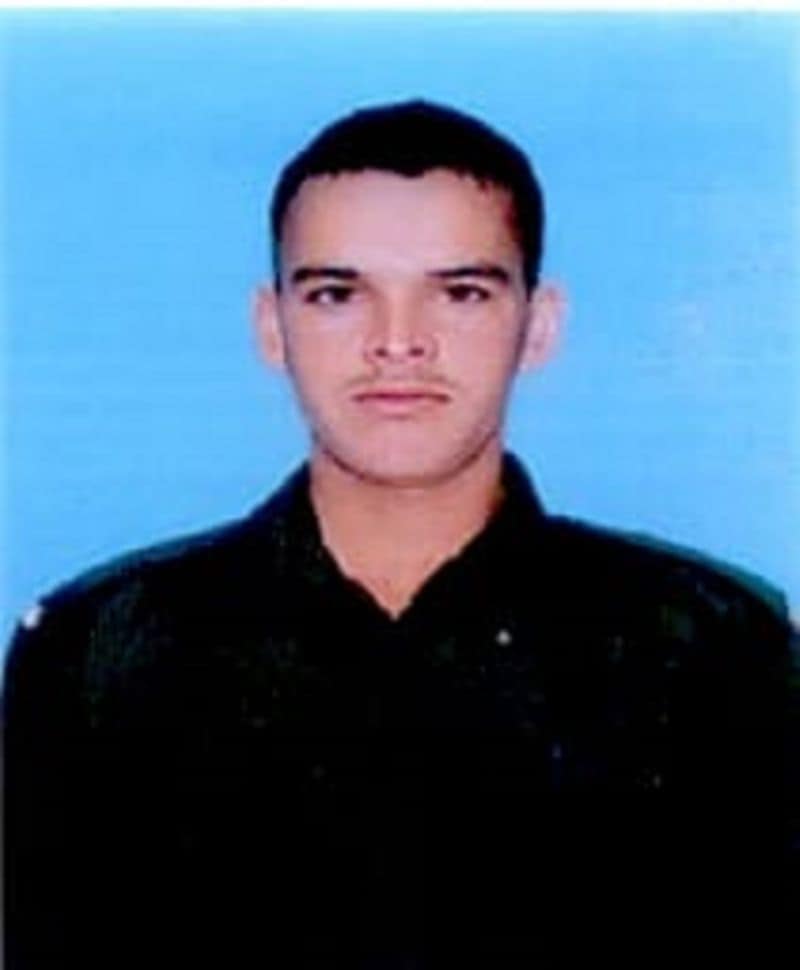The United States, Nigeria, Israel and Greece are some of the other victims of this primitive — but arguably effective, from the terrorists' point of view — manner of protesting. In Kashmir, it's a cover used to shield terrorists from India's security forces.
New Delhi: President of the United States Donald Trump's recent assertion that the troops should respond to rock-throwing migrants has sparked a debate on the appropriate use of force.
Nigerian troops have promptly got inspired by Trump's comment about migrants. The soldiers are preparing for a deadly crackdown on demonstrators over the weekend. Nigeria's military sent out a tweet that appeared to use his words to motivate soldiers to shoot at Shiite protesters. It deleted the tweet later.
From the Gaza Strip to Africa and Europe, security forces have faced stone throwers in very different ways, from firing live rounds to limiting themselves to non-lethal means.
A 1990 United Nations document calls on law enforcement officials to show maximum restraint and to use firearms only in cases in which an "imminent threat of death or serious injury" is identified. If so, Indian soldiers would be fully justified in retaliating to the stone throwers of Kashmir, more so after the death of a jawan who succumbed to the injury inflicted by a piece of rock thrown at his group of soldiers that were assisting a team of the Border Roads Organisation.
Last week, Trump had called attention to a migrant caravan of several thousand central Americans making their way toward the US border. Some migrants in a caravan recently clashed with Mexico police, hurling stones.
Although the Mexican caravan is still some 1,200 km from the US border, Trump has mobilised troops and declared that if US soldiers face rock-throwing migrants, they should react as though the rocks were "rifles". Trump later said he was merely calling for the arrests of stone throwers. Omar Shakir, the Israel-Palestine director of the international group Human Rights Watch, said he fears Trump's comments could encourage other forces to loosen their rules of engagement.
"Trump's brazen, inflammatory statements, days before US midterm elections, have already been seized on by rights abusers to justify more expansive open fire standards," he said.
Here is a look at how countries around the world respond to stone throwers.
Israel
Israeli forces have been confronting Palestinian stone throwers in the West Bank and Gaza Strip for decades. Israeli tactics have evolved over the years, particularly with the increased use of what are presented as non-lethal crowd-dispersal tools such as tear gas and rubber bullets.
Israeli officials say that live fire is used only as a last resort when soldiers' lives are threatened. But critics accuse Israel of unnecessarily, and perhaps illegally, using deadly force.
In recent months, for instance, over 160 Palestinians have been killed during mass protests along Gaza's border with Israel. Many have been unarmed.
Israel says threats go beyond stone throwing, and that protesters throw grenades and firebombs, or try to break through the border to attack Israeli civilians.
David Tzur, a former commander of Israel's paramilitary Border Police, said the non-lethal force is sufficient in most cases, but that troops could be justified using live fire in more chaotic situations, if a moving vehicle is pelted with stones in a tense locale, for instance.
Greece
In Greece, firebombs and stone-throwing are routine occurrences at anarchist demonstrations held on most weekends. Police typically respond with tear gas and stun grenades to disperse the crowds.
In 2008, a policeman fired his gun at a group of youths in central Athens, killing a 15-year-old protester. The death sparked two weeks of riots in major cities across Greece, and the policeman was jailed for murder.
Europe responding to infiltrators
Migrants making their way to Europe have clashed with security forces in various countries.
In Spain, migrants from Africa have on several occasions stormed across the border, assaulting police officers with acid, skin irritants and other objects.
But the police are not permitted to use live ammunition and have not even used rubber bullets against migrants since a much-criticized crackdown in 2014. Spanish police did use rubber bullets last year in clashes with Catalan separatists.
Hungary, which takes one of the hardest lines against migrants, used only tear gas and water cannons in a major clash with migrants three years ago. One Syrian migrant, however, was sentenced to five years in prison on terrorism charges for entering the country illegally and throwing stones at police.
Kashmir

Sepoy Rajendra Singh was part of a quick reaction team that was providing
security to a Border Roads Organisation convoy on Thursday. At 1800 hrs,
when the convoy was passing through the Anantnag bypass trijunction near NH-44,
youths hurled stones at the vehicle and Singh was injured after being hit
by a stone directly on the head: Army
In the northern part of Jammu and Kashmir, a large population of separatists have long viewed stone-throwing as a legitimate protest against New Delhi.
India has rarely responded with tough measures, including metal pellets that have maimed or blinded some protesters. India's troops are in life-threatening situations that justify the heavy use of force.
Protesters caught throwing stones at soldiers and police — often identified through video recordings of demonstrations — attempt to murder government officials, the legal punishment for which is long imprisonment. Once in a while, some stone-throwers get killed, caught in crosshairs, when soldiers target terrorists whom the stone-pelting crowd tries to shield.
Pakistan-backed terrorists have been terrorising people and government representatives in the Valley since 1989, beginning with a cleansing of local Hindus also known as Kashmiri Pandits. Nearly 70,000 people have been killed in the uprising so far, of which those killed by the security forces form a small fraction.
With inputs from Associated Press
Last Updated Nov 5, 2018, 12:34 PM IST











![Salman Khan sets stage on fire for Anant Ambani, Radhika Merchant pre-wedding festivities [WATCH] ATG](https://static-ai.asianetnews.com/images/01hr1hh8y86gvb4kbqgnyhc0w0/whatsapp-image-2024-03-03-at-12-24-37-pm_100x60xt.jpg)
![Pregnant Deepika Padukone dances with Ranveer Singh at Anant Ambani, Radhika Merchant pre-wedding bash [WATCH] ATG](https://static-ai.asianetnews.com/images/01hr1ffyd3nzqzgm6ba0k87vr8/whatsapp-image-2024-03-03-at-11-45-35-am_100x60xt.jpg)



